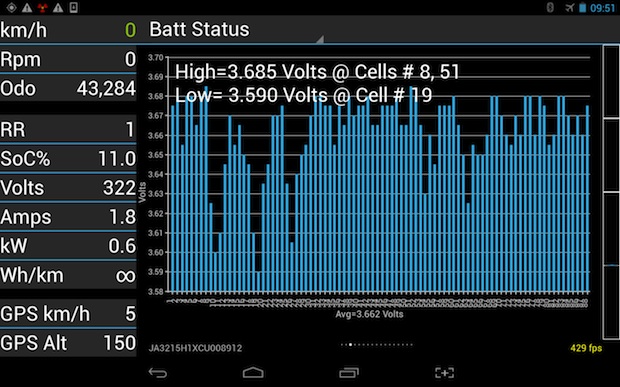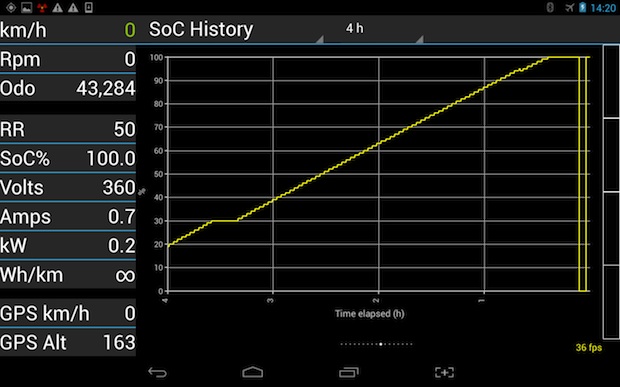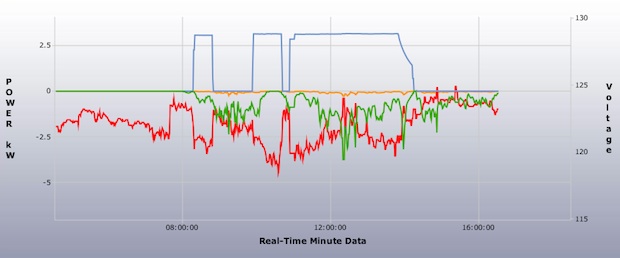This morning I took a relatively short drive in my new used i-MiEV, knowing it was going to be only about 15 miles. Even though I had forgotten to plug the car in last night, with 7 bars I figured I had plenty, although RR was indicating a disturbingly-low 20 miles IIRC. I was late, so I leadfooted all the way to my Jazzercise class (and its stunning blonde cheerleader…, but I digress).
Two stops after the class and I was ready to return home, disturbingly with 3 bars and five miles to get home and RR showing about six miles. Problem is that going home for me is uphill, so I really took it easy - this was in-town driving, no freeway. I got home with zero bars and RR=1 :shock: (but no turtle - I still have never seen it).
Pulled out CaniOn and it showed 11.0% SoC and 322v pack for the 14.9-miles! Air temperature around 60degF (16degC) - relatively mild due to the present Pacific storm. Here's the screenshot of the battery voltage:
Well, I decided to measure the L2 energy going back into the car using -
* kWhr meter
* T.E.D. (The Energy Detective)
* CaniOn
Results from 11.0% to 100%:
kWhr meter shows 12.8kWh
TED shows 12.93kWh
CaniOn :?
It took about 3 hours and 40 minutes to fill up. I would have expected six hours, based on past history with our other i-MiEV! RR was only 50 miles, reflecting my leadfoot driving.
CaniOn I didn't even look at the kWh and only took two screenshots (below) as I figured I'd have the data to download. Guess what - the bt_can database stopped on January 31, 2015 with only 12.2mb in it! :evil: I had done two thing:
1. I had inadvertently put the Android tablet into Airplane mode
2. I had upgraded to v.125 (see the
CaniOn thread for further discussion)
Anyway, back to battery capacity: for the sake of argument let's say I put in 12.86kWh, ac input.
Using a charger efficiency of 88% from that Idaho Lab test report, that means that my pack, from 11% to 100% SoC, absorbed only 0.88*12.86 = 11.32kWh. Another way of saying this is that it took 11.32kWh to restore 89% of the battery's capacity.
Conclusion: 11.32/.89 = 12.72kWh is the pack capacity of my new used i-MiEV which now has 26,899 miles (hot climate car).
The TED screenshot needs a little explanation: the blue line is my L2 charger power draw. The first power draw is the other i-MiEV, whereas the second one reflects this recharge. It shows the magnitude, the requisite 'timeout' during charging, and the normal tapering during the final balancing. The red line is the voltage on one 120v leg of this split-phase circuit and the green line is my solar panels - today is a miserable rainy day (very very welcome here in California) so the panels are putting out zip. Ignore the yellowish line.





































